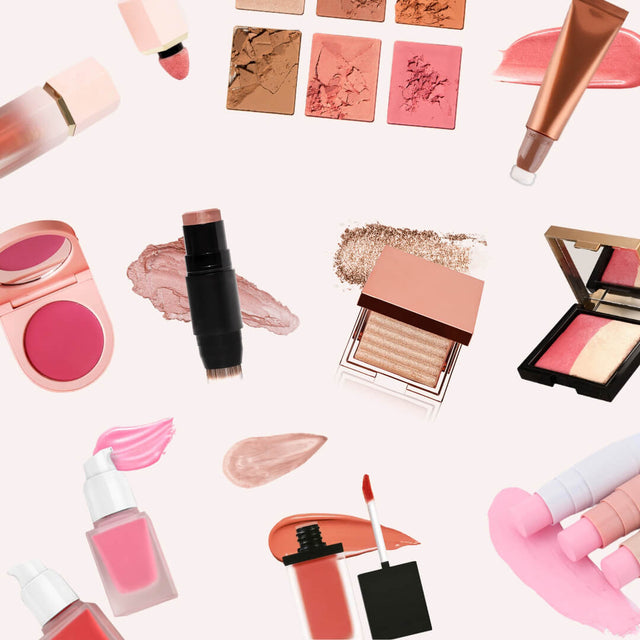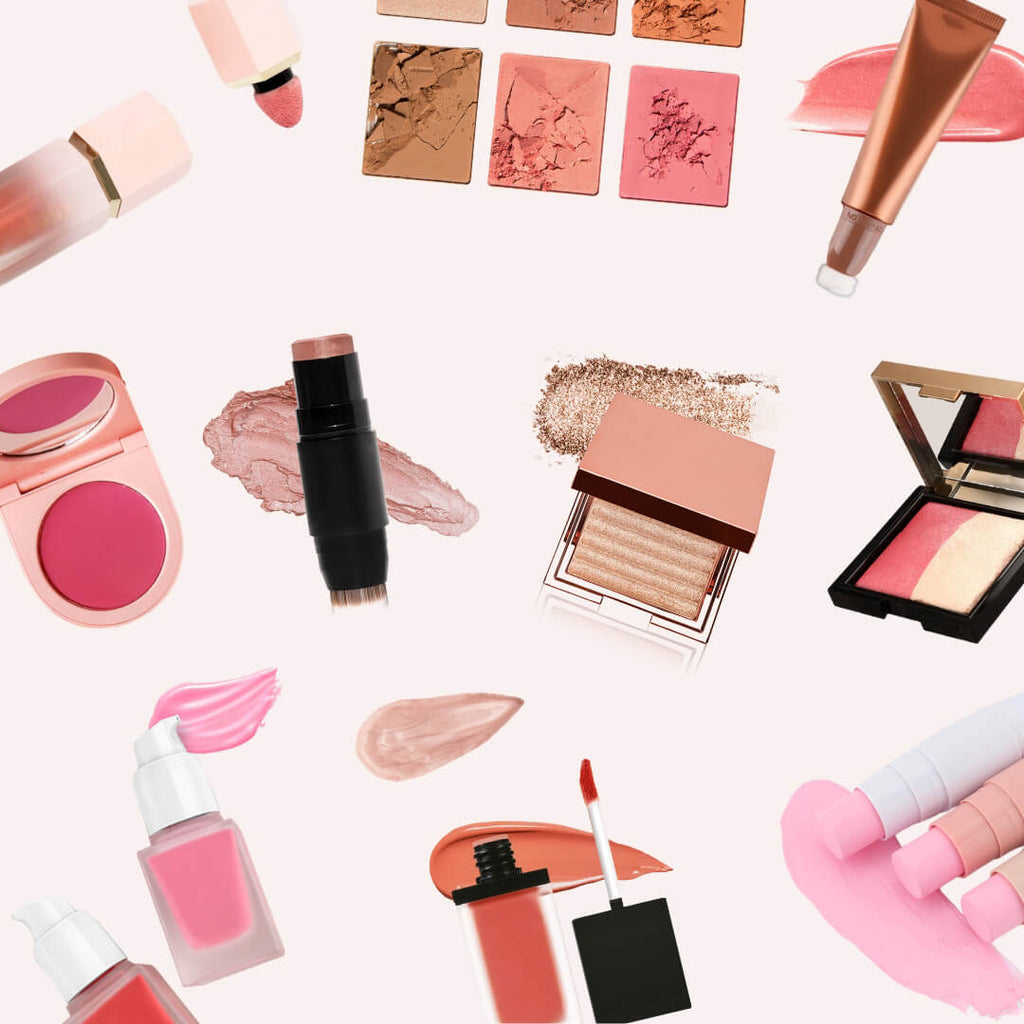Tout ce que vous devez savoir sur la production de cosmétiques qui n'obstruent pas les pores

Produits de maquillage non comédogènes de haute qualité qui n'obstruent pas les pores
Qu'est-ce que le maquillage non comédogène ?
Le maquillage non comédogène désigne des produits cosmétiques spécialement formulés pour ne pas obstruer les pores ni provoquer d'éruptions d'acné. Ces produits sont conçus pour les personnes ayant une peau sensible, sujette à l'acné ou grasse.
Le terme "comédogène" fait référence au potentiel d'une substance à provoquer des comédons (pores obstrués), ce qui peut entraîner des points noirs, des points blancs et de l'acné. Les produits non comédogènes évitent les ingrédients connus pour obstruer les pores et utilisent plutôt des alternatives plus légères et respectueuses de la peau.
Caractéristiques clés du maquillage non comédogène
- Formulé sans ingrédients obstruant les pores
- Souvent sans huile ou contenant des huiles non comédogènes
- Texture légère qui permet à la peau de respirer
- Généralement sans parfum et hypoallergénique
- Testé par des dermatologues pour la sécurité
Avantages des produits non comédogènes
Le maquillage non comédogène offre plusieurs avantages tant pour les consommateurs que pour les fabricants :
Pour les consommateurs
- Réduit le risque d'éruptions d'acné et d'irritations cutanées
- Convient aux peaux sensibles et sujettes à l'acné
- Permet à la peau de respirer et de fonctionner normalement
- Contient souvent des ingrédients bénéfiques pour la santé de la peau
- Apporte une tranquillité d'esprit aux personnes ayant des préoccupations cutanées
Pour les fabricants
- Accès à un marché en croissance de consommateurs ayant des sensibilités cutanées
- Opportunité de positionner les produits comme recommandés par les dermatologues
- Potentiel de tarification premium grâce à une formulation spécialisée
- Alignement avec les tendances de la beauté clean et des soins de la peau
- Risque réduit de retours produits dus à des réactions cutanées
Ingrédients clés et formulations
Formuler des produits non comédogènes nécessite une sélection rigoureuse des ingrédients. Voici ce qu'il faut inclure et éviter :
| Type d'ingrédient | Recommandé (Non comédogène) | À éviter (Comédogène) |
|---|---|---|
| Huiles | Huile d'argan, huile de graines de chanvre, huile de tournesol, squalane | Huile de coco, beurre de cacao, huile de germe de blé, huile de lin |
| Émollients | Triglycéride caprylique/caprique, palmitate d'isopropyle (avec modération) | Myristate d'isopropyle, lanoline acétylée, algue rouge |
| Conservateurs | Phénoxyéthanol, sorbate de potassium, alcool benzylique | Certains parabènes (peuvent irriter les peaux sensibles) |
| Pigments | Oxydes de fer, mica, dioxyde de titane (micronisé) | Oxychlorure de bismuth lourd, certaines formulations de carmin |
| Agents de texture | Silice, nylon-12, polyméthylsilsesquioxane | Lanoline, certains dérivés du pétrole, myristate de myristyle |
Conseils de formulation
- Utiliser des formulations à base d'eau lorsque c'est possible
- Sélectionner des esters avec de faibles indices comédogènes
- Incorporer des ingrédients bénéfiques pour la peau comme la niacinamide ou l'acide salicylique
- Limiter au maximum le parfum ou utiliser des alternatives naturelles
- Tester les produits finis pour la comédogénicité, pas seulement les ingrédients individuels
Processus de fabrication
La production de maquillage non comédogène nécessite un équipement et des processus spécialisés pour maintenir l'intégrité du produit :
Étapes clés de la production
- Sélection des ingrédients : Examiner attentivement toutes les matières premières pour leur potentiel comédogène
- Assainissement : S'assurer que tout l'équipement est soigneusement nettoyé pour prévenir la contamination
- Émulsion : Créer des formulations stables qui ne se séparent pas et ne bouchent pas les pores
- Dispersion des pigments : Moudre et disperser correctement les pigments pour éviter l'agrégation des particules
- Contrôle qualité : Mettre en œuvre des tests rigoureux tout au long de la production
- Emballage : Utiliser des pompes sans air et un emballage stérile pour préserver l'intégrité du produit
Considérations sur l'équipement
- Récipients en acier inoxydable pour éviter les surfaces réactives
- Mélangeurs à cisaillement élevé pour une formation correcte de l'émulsion
- Broyeurs à triple rouleau pour une dispersion fine des pigments
- Systèmes de remplissage sans air pour maintenir la stérilité du produit
- Environnement en salle blanche pour formulations sensibles
Tests et certification
La vérification des allégations non comédogènes nécessite des protocoles de test spécifiques :
| Type de test | Description | Durée | Coût approximatif |
|---|---|---|---|
| Test sur l'oreille de lapin | Méthode historique appliquant des ingrédients sur les oreilles de lapin | 2-4 semaines | $1,500-$3,000 |
| Test épicutané humain | Application sur peau humaine sous occlusion | 4-6 semaines | $2,000-$5,000 |
| Méthode du filtre en porcelaine | Mesure de l'obstruction des pores à l'aide de filtres spécialisés | 2-3 semaines | $1,000-$2,500 |
| Test en culture cellulaire | Méthode in vitro utilisant des cellules folliculaires humaines | 3-4 semaines | $2,500-$4,000 |
| Essai d'utilisation clinique | Tests en conditions réelles sur des panelistes à peau sujette à l'acné | 8-12 semaines | $5,000-$15,000 |
Options de certification
- Certification testée par des dermatologues
- Vérification non comédogène par des laboratoires indépendants
- Certification hypoallergénique
- Sceau d'acceptation de la Acne Foundation (pour les produits concernés)
- Certifications de beauté clean incluant des critères non comédogènes
Tendances et opportunités du marché
Le marché du maquillage non comédogène continue de croître à mesure que les consommateurs deviennent plus attentifs aux ingrédients :
Tendances actuelles du marché
- Demande croissante pour le « skinimalisme » - des produits qui bénéficient à la santé de la peau
- Sensibilisation accrue des consommateurs aux listes d'ingrédients et à leurs effets
- Croissance du marché des adultes sujets à l'acné, en particulier chez les femmes de plus de 25 ans
- Popularité du maquillage « no-makeup » qui sublime plutôt que couvre
- Intégration des bienfaits des soins de la peau dans les cosmétiques colorés
Opportunités pour les fabricants
- Développement de lignes spécialisées pour des préoccupations cutanées spécifiques (rosacée, hyperpigmentation)
- Création de produits multi-usages qui simplifient les routines pour les consommateurs à peau sensible
- Extension des gammes de teintes dans les fonds de teint et correcteurs non comédogènes
- Intégration d'emballages durables avec des formulations non comédogènes
- Développement de produits de soins pour hommes avec des propriétés non comédogènes
Questions fréquemment posées (FAQ)
Non comédogène désigne des produits formulés spécifiquement pour ne pas obstruer les pores. Ces produits évitent les ingrédients connus pour provoquer des comédons (pores obstrués) pouvant entraîner points noirs, points blancs et poussées d'acné. Le terme n'est pas réglementé par la FDA, il est donc important de choisir des produits de fabricants réputés qui effectuent des tests appropriés.
Non, de nombreuses huiles naturelles sont en fait comédogènes. L'huile de coco et le beurre de cacao, par exemple, ont des indices de comédogénicité élevés. Certaines huiles naturelles non comédogènes incluent l'huile d'argan, l'huile de graines de chanvre, l'huile de tournesol et l'huile de rose musquée. La source, la méthode de traitement et la pureté de l'huile peuvent toutes affecter son potentiel comédogène.
Recherchez des produits qui ont été testés par des dermatologues ou qui ont subi des tests spécifiques de comédogénicité. Les fabricants réputés fournissent souvent des informations sur leurs méthodes de test. Méfiez-vous des produits qui prétendent être non comédogènes sans aucune preuve ou information sur les tests.
Bien que le maquillage non comédogène ne traite pas activement l'acné, il peut aider à prévenir de nouvelles éruptions en ne bouchant pas les pores. Certains produits non comédogènes peuvent contenir des ingrédients comme l'acide salicylique ou la niacinamide qui peuvent améliorer l'état de la peau, mais ils ne doivent pas remplacer les traitements anti-acné dédiés prescrits par les dermatologues.
Le maquillage non comédogène est particulièrement bénéfique pour les peaux sujettes à l'acné, grasses et mixtes. Cependant, il peut aussi convenir aux peaux normales et sèches, surtout puisque de nombreuses formulations non comédogènes incluent désormais des ingrédients hydratants qui ne bouchent pas les pores. Les personnes ayant la peau très sèche pourraient nécessiter une hydratation supplémentaire.
Le développement d'une formule non comédogène correctement testée prend généralement 6 à 9 mois. Cela inclut la formulation initiale, les tests de stabilité, les tests de comédogénicité et les évaluations de sécurité. Les formulations plus complexes ou nécessitant des ingrédients spécialisés peuvent prendre plus de temps. Chez Sindebella, nous avons développé des processus rationalisés qui peuvent parfois réduire ce délai à 4-6 mois pour certaines catégories de produits.
À propos de Sindebella : votre partenaire de fabrication non comédogène
Chez Sindebella, nous sommes spécialisés dans la création de cosmétiques non comédogènes de haute qualité répondant aux normes les plus strictes de sécurité et d'efficacité. Grâce à notre expertise en formulation et fabrication, nous aidons les marques à développer des produits auxquels les clients à peau sensible peuvent faire confiance.
Nos services non comédogènes
- Développement de formulation : Formules non comédogènes personnalisées adaptées à votre marque
- Approvisionnement en ingrédients : Accès à des matières premières non comédogènes de qualité supérieure
- Coordination des tests : Organisation des tests de comédogénicité par des tiers
- Fabrication : Production conforme aux GMP dans notre installation certifiée
- Solutions d'emballage : Options d'emballage airless et stérile
Pourquoi choisir Sindebella pour la production non comédogène ?
- Plus de 15 ans d'expérience en fabrication cosmétique
- Installation certifiée ISO 22716 et GMP
- Expertise en formulations pour peaux sensibles
- Protocoles complets de tests et de contrôle qualité
- Quantités minimales de commande flexibles
- Support complet du concept au produit fini
Prêt à développer votre ligne non comédogène ?
Contactez-nous aujourd'hui pour discuter de votre projet et recevoir un devis personnalisé.
WhatsApp: +86 13725381582Ou en savoir plus sur nos services et nos capacités
À propos de nous

